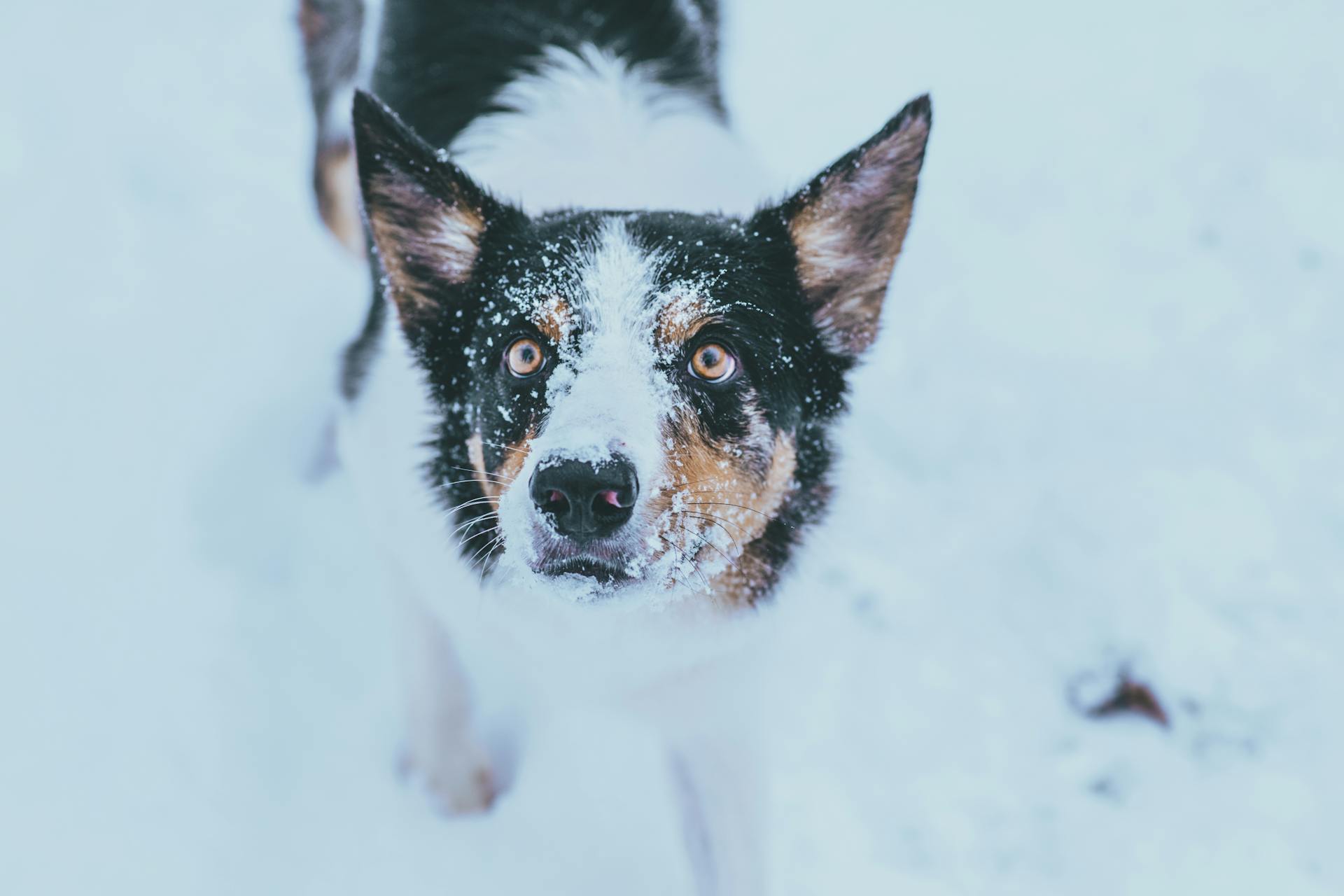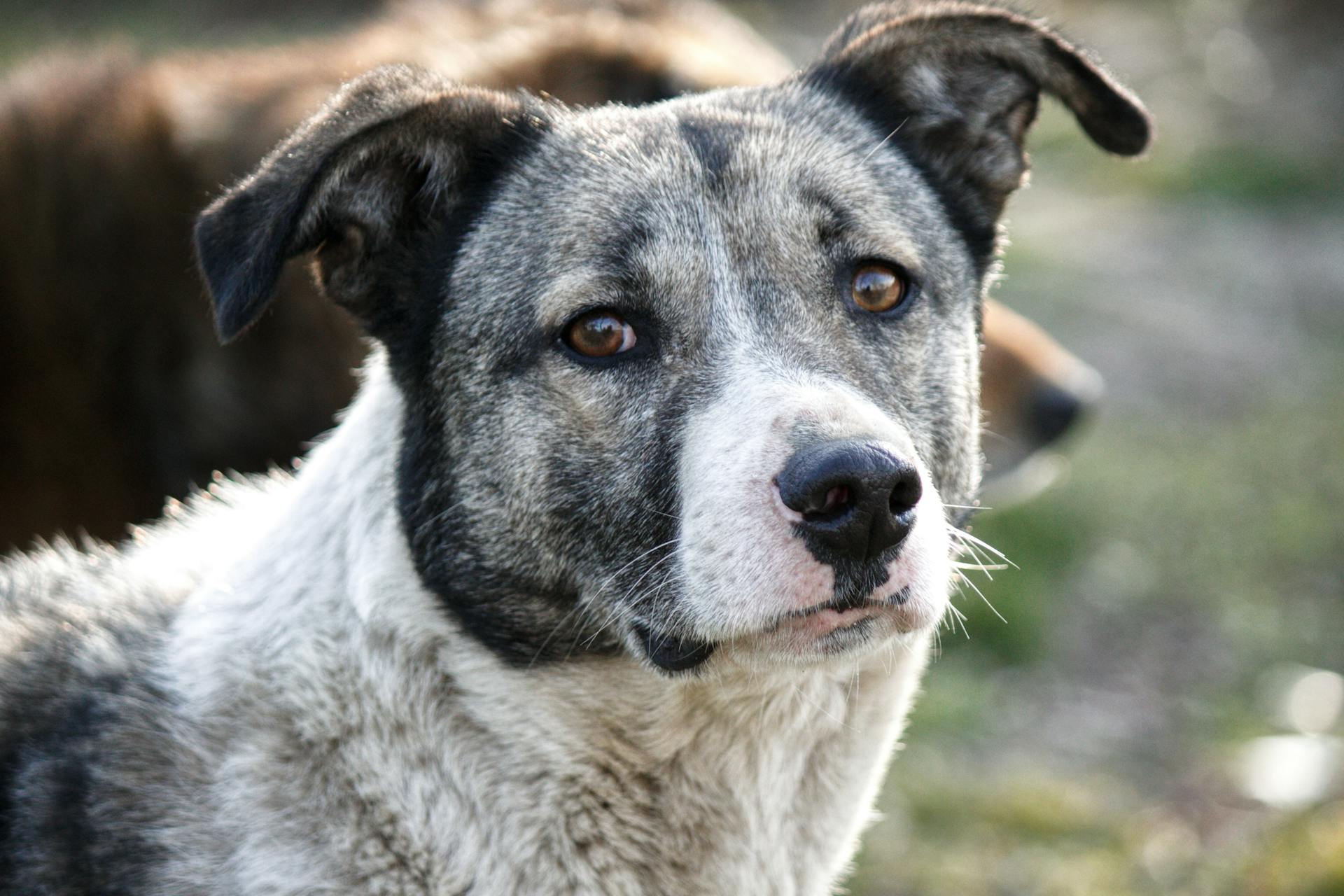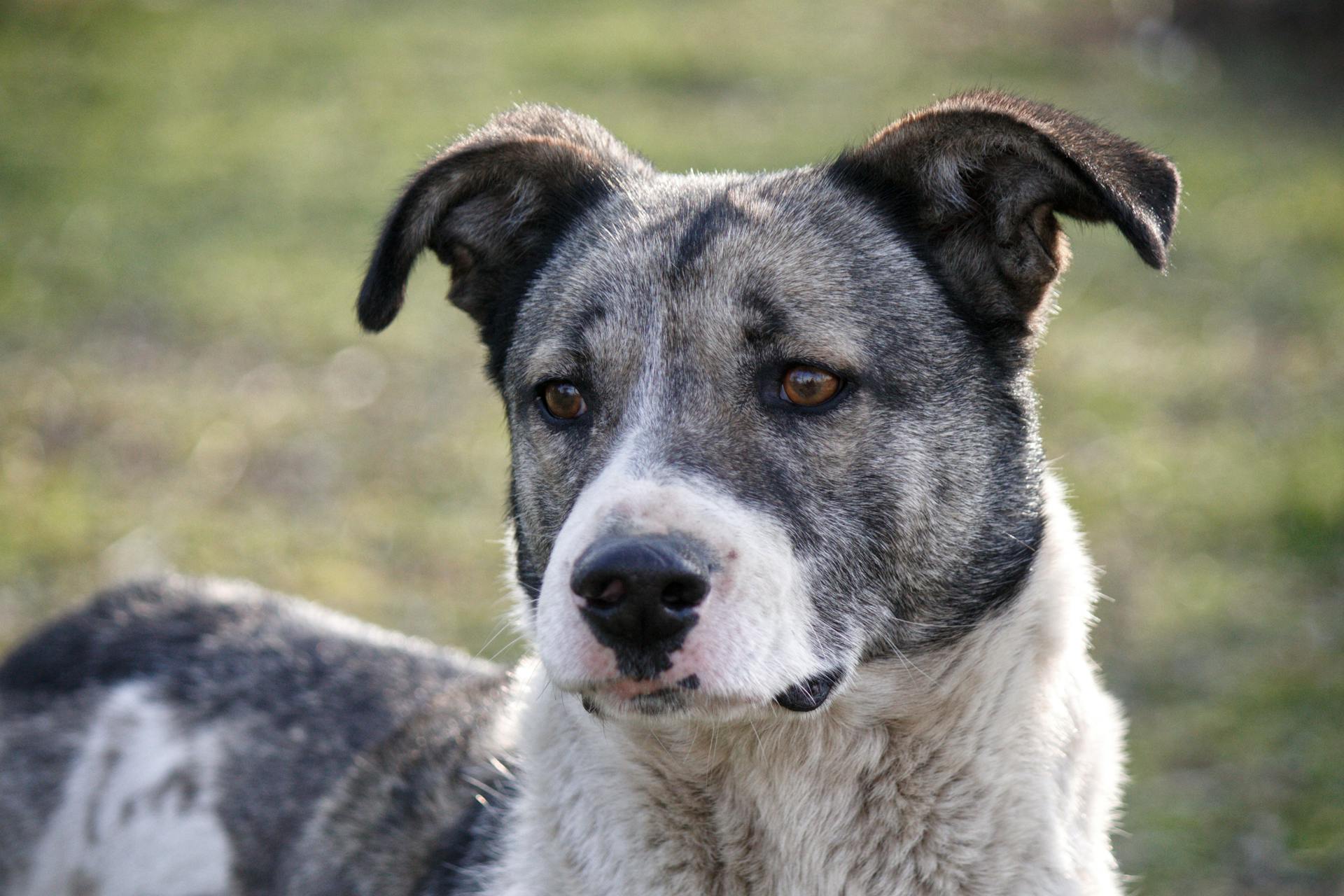
Blue Heelers are often considered excellent guard dogs due to their natural protective instincts. They're naturally wary of strangers, which makes them great at alerting their owners to potential threats.
Their strong herding background also gives them a strong work ethic, making them highly trainable and responsive to commands. This means they can be taught to be effective guard dogs with proper training and socialization.
One of the key reasons Blue Heelers make great guard dogs is their loyalty to their family. They bond strongly with their owners and will go to great lengths to protect them. This loyalty is a result of their strong pack mentality, which is a trait inherited from their herding roots.
Their intelligence and alertness also make them well-suited to detecting and responding to potential threats. With proper training, they can be an invaluable asset to any home or family.
Guard Dog Potential
Australian Cattle Dogs, also known as Blue Heelers, have a natural instinct to guard and protect their family and territory. They were originally bred to herd cattle in the Australian outback, but their role also included protecting the herd from predators like Dingos.
Intriguing read: Border Collies Herding
Their guarding ability is rooted in their history as livestock guardians, where they needed to be assertive and independent to keep the herd safe. This independence translates well to protecting their family and home.
Blue Heelers are extremely guarded and protective of their family members, including children, and will often follow them around to keep an eye on them. They can be gentle and caring with kids, but will also defend them if necessary.
To tap into their guarding potential, it's essential to train and socialize them properly. This includes teaching basic obedience, impulse control, and property boundaries. A flirt pole is a great tool for teaching impulse control, as it helps your Blue Heeler learn to leave a toy on command.
Once your Blue Heeler is confident in its guarding ability, you can test it by having a stranger approach the property and act afraid. If your dog is doing its job, it will bark and warn the stranger off. You can also try distracting your dog with treats or toys to see if it remains focused on its guarding duties.
Remember, Blue Heelers are not generally aggressive dogs, but they will stand their ground if necessary. With proper training and socialization, they can be loyal and protective companions for your family.
For your interest: Bernese Mountain Dog Protective
Exercise & Living
Exercise can be a great way to bond with your Blue Heeler, but it's essential to consider their high energy levels and exercise needs. Blue Heelers require at least 30 minutes of exercise per day, which can be a challenge for busy owners.
Regular exercise can help prevent boredom and destructive behavior in Blue Heelers. They need physical and mental stimulation to stay happy and healthy.
Exercise can also help Blue Heelers develop their natural herding instinct, which makes them excellent working dogs. Their high energy levels make them perfect for active families or individuals who enjoy outdoor activities.
Blue Heelers are naturally athletic and agile, making them well-suited for high-intensity activities like agility training or running. They thrive on physical and mental challenges.
If you're considering getting a Blue Heeler as a guard dog, keep in mind that they need plenty of exercise to stay happy and healthy. This can include activities like hiking, running, or playing fetch.
For your interest: Is High Protein Dog Food Good for Dogs
Training and Health
Training a Blue Heeler to be a good guard dog requires a high level of basic obedience. This is important so you have control in any potential situation.
Teaching impulse control is crucial, and one of the best ways to do this is through flirt pole training. This involves moving a toy along the ground in different directions as your Blue Heeler tries to chase it, and then teaching them to leave the toy on command.
Socialization is also vital for Blue Heelers, who can become overly protective of their owners if they don't receive proper socialization. This should start in the first few months of their lives and continue throughout their lifetime.
Regular exercise, high-quality nutrition, and regular health visits can help keep your Blue Heeler healthy and prevent common health concerns.
See what others are reading: American Toy Fox Terrier Rescue
Training
Australian Cattle Dogs, also known as Blue Heelers, are highly intelligent breeds that do well with training.
Training is a fundamental activity for bonding with a herding dog, and it provides some of the stimulation they need. Start training early for puppies and be consistent.

Both breeds respond well to training and learn new commands quickly. Finding a healthy balance between training, simulation, and obedience for these dogs is important.
Herding dogs use nipping and biting to control livestock, so it's essential to focus on these unwanted behaviors when training a puppy. Socialization is another important aspect of training.
Border Collies can be shy, but proper socialization will help them get over it. Socialization is even more important for Blue Heelers, who can become overly protective of their owners.
To teach your Blue Heeler to be a guard dog, you want them to be calm, obedient, and loyal. All guard dogs should have a high level of basic obedience.
Teach your Blue Heeler the property boundaries by walking them around the boundary line so over time they will understand what constitutes their territory. This is important for their training.
Flirt pole training is a great way to teach impulse control in a dog, and it's one of the best ways to teach your Blue Heeler to leave a toy on command. You can further test your Blue Heeler by having a stranger use distractions such as bribing them with treats or a toy.
If this caught your attention, see: Bull Terrier Toy
Energy Level
Australian blue heelers are high-energy dogs that require regular exercise to stay happy and healthy. They have great stamina and will take all the exercise you can provide, so it's essential to be prepared with your jogging shoes ready.
Daily mental and physical stimulation is a must for this breed. If you're unable to commit to their high energy demands, they may become bored and develop behaviour problems.
Australian blue heelers often do better when assigned a job or task, which can be a great way to keep them engaged and stimulated. Examples of jobs or tasks for this breed include agility training, Dog Disc tournaments, and herding trials.
A different take: Are Border Collies High Energy
Health
Blue Heeler German Shepherd mixes are relatively healthy dogs with an average life expectancy of 9 to 14 years.
Daily exercise is essential to keep your pup fit, and high-quality nutrition plays a crucial role in their overall health.
Regular health visits and vaccinations are vital to prevent and detect any potential health issues early on.
Check this out: Welsh Corgi Health Problems

Like other mixed breeds, they are at risk of the health conditions seen in their parents' bloodline, so it's essential to be aware of these concerns and the symptoms to look out for.
A pet insurance plan can help offset the costs associated with unexpected health needs, giving you peace of mind and financial security.
Readers also liked: English Bull Terrier Health Issues
Grooming and Differences
Blue Heelers are relatively low maintenance when it comes to grooming, thanks to their standard straight coat that only needs brushing several times a week. They also have a low need for bathing, only requiring it once every two or three months.
They do require regular nail trimming to prevent pad sores, and their teeth need to be brushed daily to prevent dental issues. You can use a bristle or slicker brush and an undercoat rake for the shedding seasons to keep their coat healthy and dirt-free.
Here are some key differences between Blue Heelers and other breeds, like Border Collies:
Grooming
Grooming a Blue Heeler German Shepherd mix is relatively simple, thanks to their standard straight coat. They have a double coat that needs brushing several times a week throughout the year to keep their jacket dirt-free and healthy.
Brushing frequency varies depending on the breed, but German Blue Heelers need it several times a week. They also require bathing once every two or three months unless they get super muddy on their adventures.
Daily dental care is crucial for this hybrid breed, so start brushing their teeth every day. Clip their nails when they get too long to prevent pad sores, although their nails often wear down naturally, thanks to their high activity.
Both Border Collies and Blue Heelers shed, but neither is considered high maintenance when it comes to grooming. However, Border Collies need more grooming due to their double coat, requiring brushing two or three times a week.
Here's an interesting read: Welsh Corgi Grooming
Blue Heelers have minimal grooming needs due to their short outer coat that is resistant to dirt and water. They require brushing once or twice a week, making them a great choice for busy owners.
Australian blue heelers are low maintenance when it comes to grooming, requiring occasional brushing to maintain a clean coat. They have annual periods of shedding, but frequent brushing and a bath during the high shedding period should be enough to contain the shedding hair.
Here's a quick rundown of the grooming needs of these breeds:
Remember to trim your herding dog's nails at least once a month to prevent overgrowth. Don't forget about brushing your pup's teeth a few times a week and scheduling yearly cleanings with your vet.
Key Differences
Border Collies and Australian Cattle Dogs are both popular breeds, but they have some key differences.
Border Collies are more energetic than Australian Cattle Dogs.
Their coats are also a notable difference, with Border Collies having longer, fuller coats that require more grooming.

Australian Cattle Dogs, on the other hand, are harder to train than Border Collies.
Here's a summary of the key differences:
Blue Heelers, another name for Australian Cattle Dogs, need a job and constant stimulation to prevent destructive behavior.
Frequently Asked Questions
Why is my blue heeler so aggressive?
Blue heelers were bred to protect and control, so their natural instinct is to be suspicious of strangers and defend their territory. This inherited behavior may be contributing to your dog's aggressive behavior, but there are ways to address and manage it
Sources
- https://heelerinfo.com/are-blue-heelers-good-guard-dogs/
- https://www.caninejournal.com/blue-heeler-german-shepherd-mix/
- https://www.caninejournal.com/border-collie-vs-australian-cattle-dog/
- https://www.ehow.co.uk/info_8632315_pros-cons-australian-blue-heeler.html
- https://vocal.media/petlife/blue-heelers-antisocial-or-an-introvert-s-best-friend
Featured Images: pexels.com


